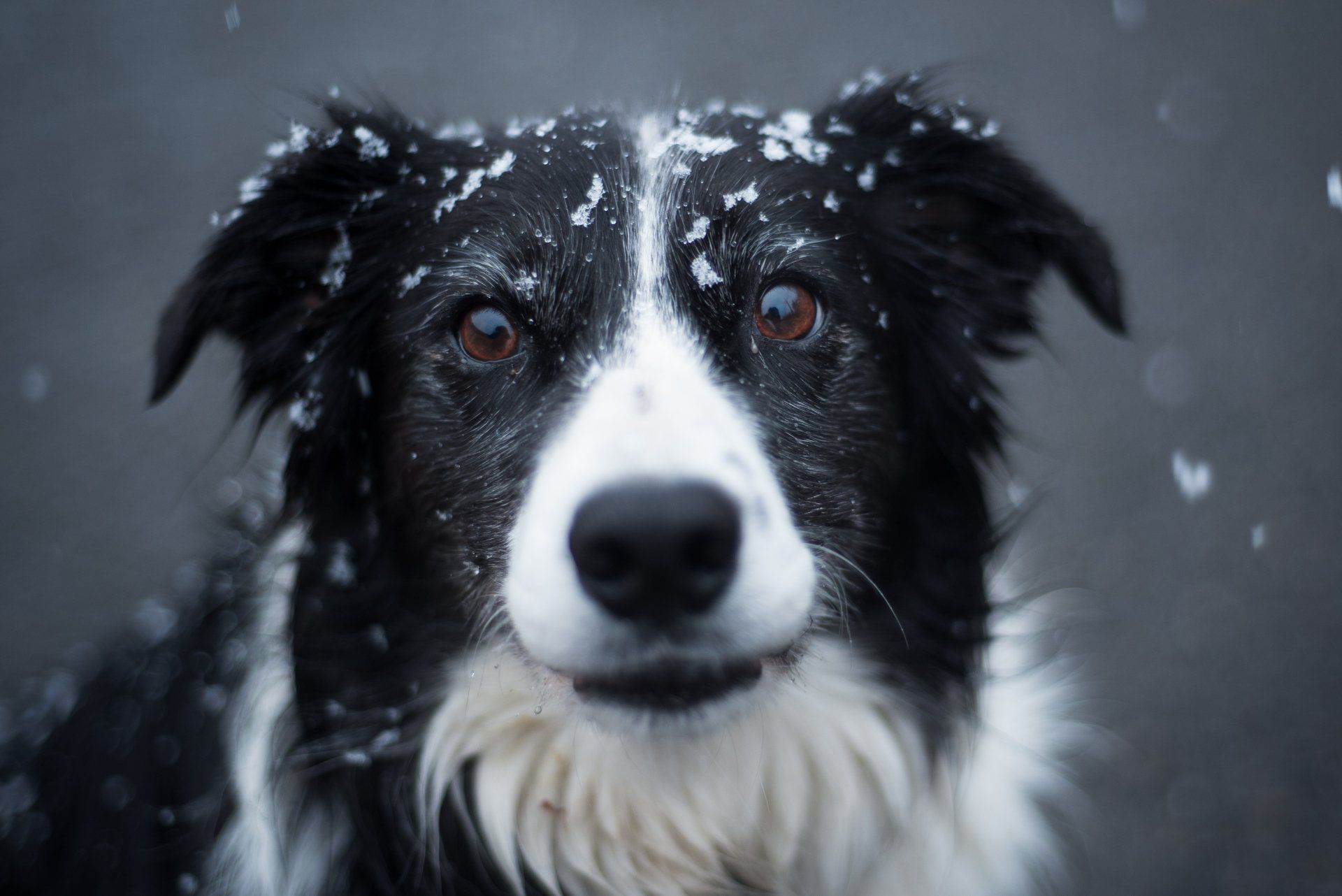Get in touch
555-555-5555
mymail@mailservice.com

Common Cold Weather Maladies
There are certain pet issues that tend to happen more frequently in colder weather. Most of the issues apply more to dogs than cats since dogs tend to spend more time outside, but all of these can apply to both. Below we’ll go through some of the more common cold weather maladies.
Broken toenails
Though toenails can crack or break during any season, it’s much more common in colder weather. It seems like the increased frequency is due to uneven and icy ground. This leads to missteps on slippery surfaces and snags on pieces of ice or crusty snow. If your pet breaks a toenail, it’s important to make sure they can’t lick or chew at it. If they’re not bothering with the toenail and it isn’t bleeding, it is possible veterinary intervention may not be necessary.
At the veterinary clinic, it can be as simple as removing the broken bit of nail to fix the problem. However, if the quick (part of the toenail with nerve endings and blood vessels) is exposed, broken nails can be very sensitive. Some pets require heavy sedation to cut back the broken toenail and have a bandage applied. In addition to removing the broken nail and preventing licking at the site, treatments like anti-inflammatory medication or antibiotics may be indicated. Keeping your pet’s nails short with regular nail trimming can help prevent them from snagging or breaking.
Cracked paw pads and salt irritation
Paws can suffer once it gets slippery outside - it can feel like road salt is everywhere. If it isn’t pet safe, road salt can be extremely irritating to the skin. Contact with salt can manifest as mild irritation like an intermittent limp or licking at the paws all the way up to cracked paw pads and skin infections.
Preventing exposure to the problematic salt by using disposable or reusable booties can be very helpful. Rinsing or wiping off paws after coming in from outside is recommended if your pet does not tolerate booties. Sometimes just avoiding the areas you know are salty is enough to prevent irritation.
Sometimes cracked paw pads or skin irritation requires veterinary attention. Most cracked paws do not require surgery and instead respond well to topical therapy like Musher’s Secret™. However, stitches may be indicated if there is a laceration from a sharp piece of ice. Antibiotics may be needed if there is a skin infection due to excessive paw licking secondary to road salt exposure. Sometimes pieces of road salt can get stuck between your pet’s toes causing persistent limping.
Urinary tract infections
Though not caused by cold weather, it seems like there is an uptick in diagnosed urinary tract infections and bladder stones when there is snow outside. Some owners may not know their pet has a urinary issue until they notice blood-tinged urine in the snow! Other signs of a urinary issue include going more frequently and in smaller amounts or having accidents inside the house.
If you suspect your pet has a urinary tract infection then contact your veterinarian - likely the next steps will be to check a urine sample for evidence of an infection and dispense antibiotics.

Hypothermia
Primary hypothermia occurs as a result of exposure to a low environmental temperature, leading to low body temperature. In dogs and cats, temperatures under 98°F are considered hypothermic. In cases of mild hypothermia, simple rewarming with a warm blanket may be enough. In severe cases, more intensive measures at the veterinary clinic like warmed intravenous fluids, forced air heaters, and warm water blankets may be necessary.
It’s important to be aware of the temperature outside - if it’s below freezing (32°F), pets should not be left outside. Some pets, especially those that are older or thin, may need insulating layers to go for a walk safely.
Frostbite
Frostbite occurs when the skin and other tissue freeze due to prolonged cold exposure. Mild cases of frostbite do not cause permanent damage, but with more advanced cases skin and underlying tissues can die. Body parts with a lower blood supply like ear tips and paws are affected most commonly and severely. To attempt to save frostbitten parts, prolonged wound management with bandage changes may be successful, but often amputation is required.
Antifreeze toxicity
Antifreeze, or ethylene glycol, is traditionally thought of as the product used in car radiators to prevent freezing, but can be found elsewhere - in ink and ink pads, brake fluid, plane deicers, some kinds of paint, polishes, and some imported snow globes. It was once thought that animals consumed ethylene glycol because it tastes sweet, but that has been refuted - in studies, animals were not attracted to water with high levels of ethylene glycol. However, some curious pets may be interested in something that has spilled or chewing on products containing ethylene glycol. Once it’s been ingested, ethylene glycol is absorbed quickly - generally within 30-60 minutes. Ethylene glycol itself isn’t a problem, toxic metabolites cause lots of issues - significant neurologic depression and kidney damage will result if enough was ingested.
Ethylene glycol toxicity follows a pattern of signs depending on when it was consumed. Within about 30 minutes and for up to 12 hours, signs consistent with a pet feeling drunk may be noted. Some metabolic changes occur after this initial and then 2-3 days after ingestion pets will go into kidney failure. Pets that ingest higher quantities of ethylene glycol or those who are not treated right away with intensive therapy have a poorer prognosis and may die.
Making sure to clean up ethylene glycol spills right away and keep all products containing ethylene glycol in secure locations is key for preventing exposure.



